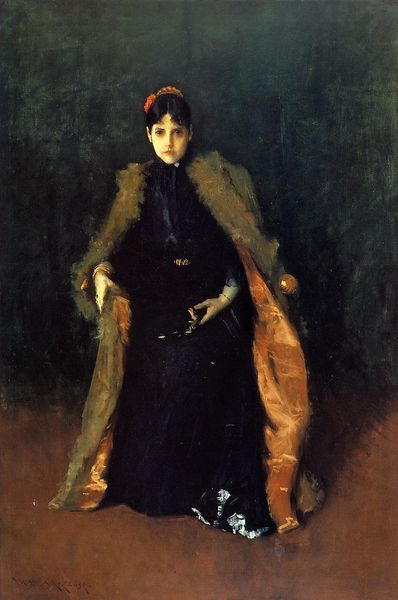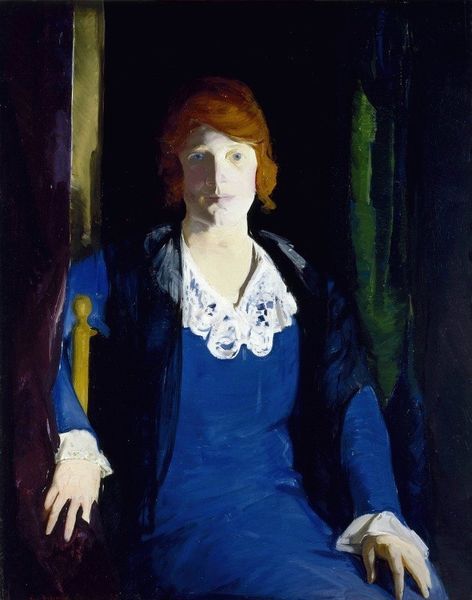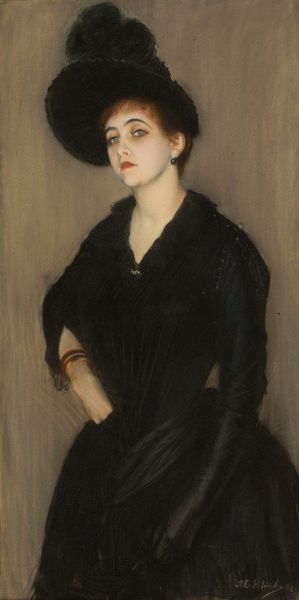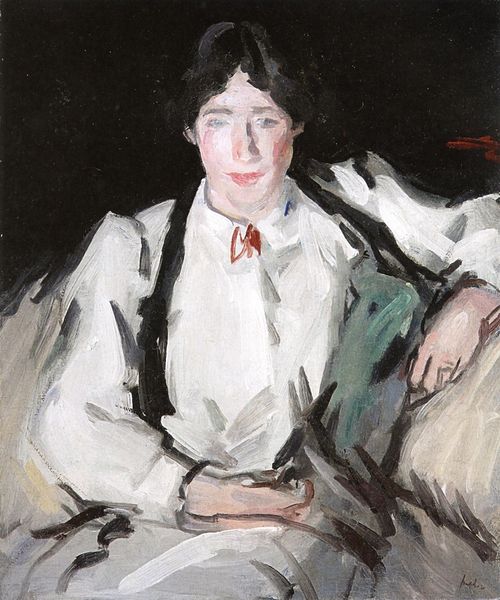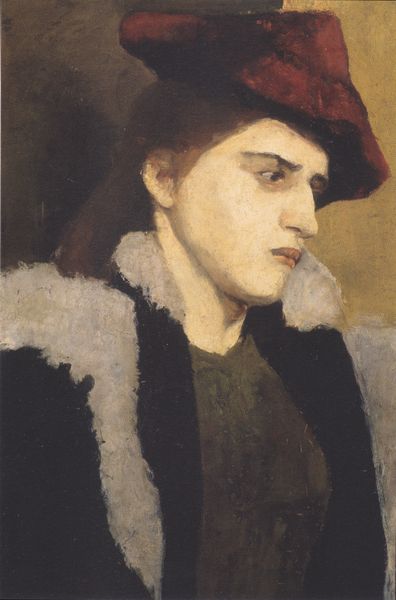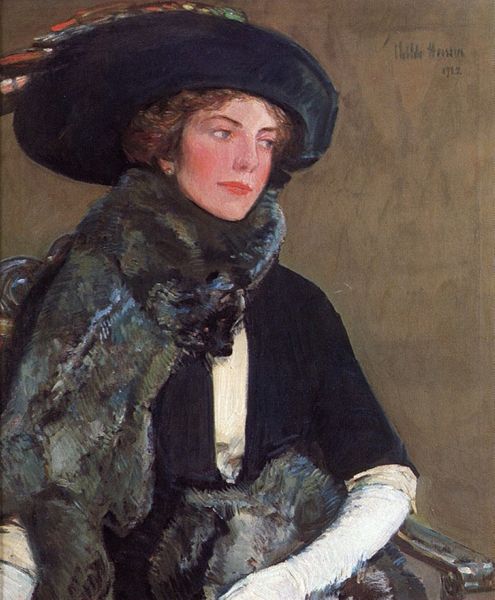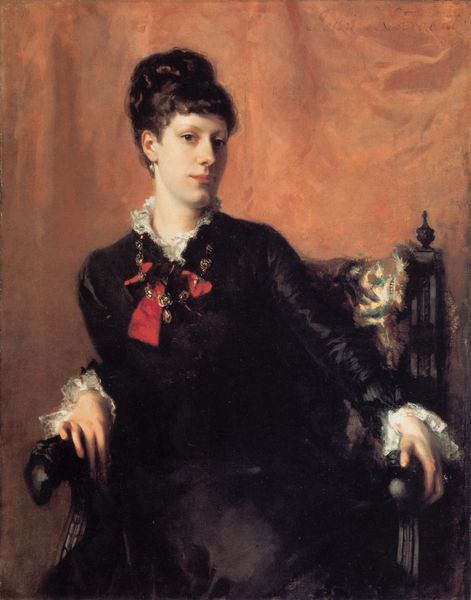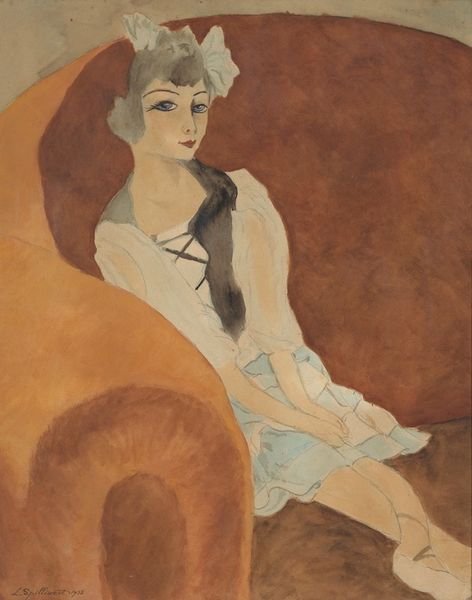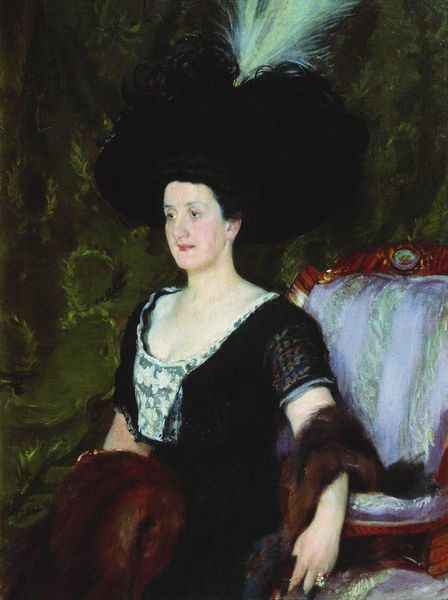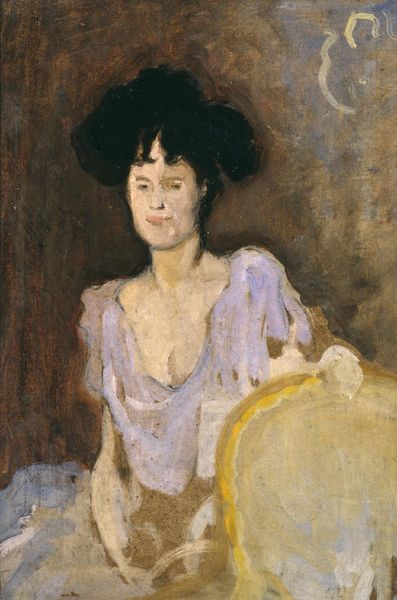
Copyright: Public domain
Editor: This is Robert Henri's "Viv (New York)," painted in 1915 using oil on canvas. The immediate feeling I get is a kind of quiet strength from the figure, an androgynous presence that disrupts traditional portraiture. What do you see in this piece, especially considering the time it was created? Curator: That’s a perceptive starting point. Considering it was painted in 1915, we have to consider the context of the burgeoning modernist movement and shifts in societal norms. Henri, a leading figure of the Ashcan School, was known for his realist portraits, but here we see a portrait that pushes boundaries. Notice how "Viv" challenges conventional femininity with her clothing and gaze. Could this be interpreted as a commentary on gender roles and emerging ideas about women's liberation in early 20th century New York? Editor: I see what you mean! It's almost as if Henri is capturing a moment of self-determination. The direct gaze, for me, challenges the passive role women were often assigned in art. Do you think her clothing is also part of this message? Curator: Absolutely. The dark, almost masculine attire contrasted with the splashes of floral color in the background speaks volumes. Is it possible to view her style as a deliberate act, reflecting changing attitudes of the time period? She could be viewed as someone experimenting with visual codes, negotiating identity and self-expression. What does the composition tell us? Editor: The darkness surrounding her emphasizes her face and direct gaze. Perhaps the flowers, though colorful, also look artificial and constructured somehow, suggesting that nothing is quite at is seems. That’s really fascinating. Curator: Exactly. Henri is positioning “Viv” within a complex visual language. Understanding those cultural nuances, particularly around identity and representation, is key to interpreting the work's power. It also calls to attention to ways portraiture often acts as an endorsement of patriarchal norms, but sometimes challenges them. Editor: This makes me view the painting with a deeper awareness, thinking not just about "Viv" as an individual, but what she represents during this period of societal change. I also notice more attention to detail that gives even more of an authentic depiction of the subject, and challenges expectations about portraiture. Curator: Indeed. Thinking about Henri’s portrayal in that light expands our understanding, situating art and its subjects as agents of cultural change.
Comments
No comments
Be the first to comment and join the conversation on the ultimate creative platform.
